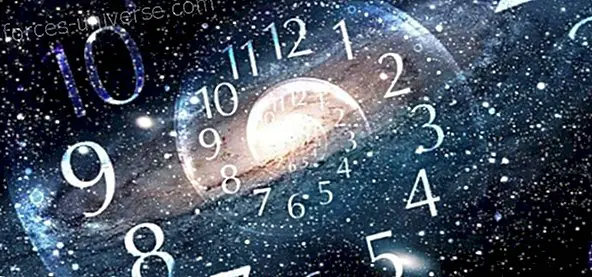 In the beginning was Brahma, with whom was the Word and the Word is Brahma.
In the beginning was Brahma, with whom was the Word and the Word is Brahma.
The Vedas
In the beginning was the Word, and the Word was with God and the Word was God.
Gospel of Saint John
How extraordinary this fundamental agreement is revealed to us between the sacred writings of the East and the West. Through sound, a vibrational emanation full of consciousness, both attribute the creation of the Universe to the will of a Divine Being. Such primary belief is not restricted to Hindu and Christian traditions; on the contrary, with surprising regularity, the consmogenetic theory of a divine vibration is spread by diverse cultures of the most remote antiquity.
Chinese and Celtic, Egyptian and Mayan, Sumerian and Hebrew, all these peoples refer, mythologically or symbolically, to a similar primordial phenomenon. It is a Cosmic Sound, eternal and universal, recognized as a true essence of life and consciousness, substance and meaning, at the same time sensitive and intelligible principle. The acoustic sound that reverberates in the world, the real foundation of music and language, would then be a perceptible reflection and physical manifestation par excellence of a superior and transcendent vibratory activity. Thus also arose the study of astrology in the primitive cultures, such as the knowledge of a zodiac of timbral signs and the interpretation of their influences in the terrestrial sphere.
The mystical notion of "OM" in the East.
 There are many names by which the creative Word was designated and invoked - eg AUM, AMEN, OMEN, IAM, HU, YAHWEH. In the Vedic record, the oldest sacred text of which there is knowledge, the monosyllable OM expresses the sound or concept of this original vibration in its purest form (one and undifferentiated). All beings, all material or energetic phenomena of Nature are imbued with the vibratory power of OM, which progressively differentiates and combines with each other, as it falls in frequency and descends from the spiritual realm.
There are many names by which the creative Word was designated and invoked - eg AUM, AMEN, OMEN, IAM, HU, YAHWEH. In the Vedic record, the oldest sacred text of which there is knowledge, the monosyllable OM expresses the sound or concept of this original vibration in its purest form (one and undifferentiated). All beings, all material or energetic phenomena of Nature are imbued with the vibratory power of OM, which progressively differentiates and combines with each other, as it falls in frequency and descends from the spiritual realm.
There are seven vibratory emanations or tonal aspects in which OM is first differentiated, an archetypal range of individual sound qualities whose sovereign power guarantees harmony and order in the Universe. Intimately associated with the main planets, these celestial sounds have obvious correspondence in the elementary structure of the physical world as we perceive it; Thus we have seven musical notes on the diatonic scale; in the chromatic spectrum, seven fundamental colors, and in the week, seven natural cycles.
Vocalized in yogic meditation, or only felt as inner audition, the syllable OM promotes the tuning of human consciousness with the cosmic order, with the imperceptible Divine Voice. This inner sound can be experienced through deep meditation.
 In Sanskrit, curiously the perceptible acoustic sound (ahata) and the omnipresent spiritual sound (anahata) have a common etymological root. It should be noted that the term "anahata" also designates the heart chakra, the most important of the seven spiritual centers that in Man capture and emit energy, and where the Word is based.
In Sanskrit, curiously the perceptible acoustic sound (ahata) and the omnipresent spiritual sound (anahata) have a common etymological root. It should be noted that the term "anahata" also designates the heart chakra, the most important of the seven spiritual centers that in Man capture and emit energy, and where the Word is based.
In the Vedic mysticism of sound, music and the human voice are thus a sensitive vehicle for the manifestation of the Cosmic Sound energies. The Vedas are also sacred hymns that are meant to be sung and sung, instead of read and studied. Reflection favors meditation, access to higher states of consciousness through co-vibration and full harmony with the most intimate Sound of what it is eternally.
The metaphysical concept of the Logos in the West
 It is also by the Divine Word that, in the allegorical language of Genesis, the supreme creative will is manifested. “God said: Let there be Light! And the light was made ... The evening came and then the morning; It was the first day. "God said ..." is the repeated Voice that represents the successive moments of creation in the original biblical story. If there the light appears as the first manifestation of life, the most intense vibration of everything that exists on the physical plane - like the morning of the world, according to the veterinary testamentary vision and image - it is really the Almighty Sound who invokes it and It gives primacy. The voice is finally silent, consummating the creative impulse: "... God having finished the work he had done on the seventh day, he rested from his work." And so this new septenary metric is fulfilled with a rhythmic interruption for sabbatical rest, which corresponds to a final time of pause and silence. Also here, in the Jewish tradition, such stillness is the touchstone for those who internally listen and prepare to put into practice the Word of God revealed to the Human Being.
It is also by the Divine Word that, in the allegorical language of Genesis, the supreme creative will is manifested. “God said: Let there be Light! And the light was made ... The evening came and then the morning; It was the first day. "God said ..." is the repeated Voice that represents the successive moments of creation in the original biblical story. If there the light appears as the first manifestation of life, the most intense vibration of everything that exists on the physical plane - like the morning of the world, according to the veterinary testamentary vision and image - it is really the Almighty Sound who invokes it and It gives primacy. The voice is finally silent, consummating the creative impulse: "... God having finished the work he had done on the seventh day, he rested from his work." And so this new septenary metric is fulfilled with a rhythmic interruption for sabbatical rest, which corresponds to a final time of pause and silence. Also here, in the Jewish tradition, such stillness is the touchstone for those who internally listen and prepare to put into practice the Word of God revealed to the Human Being.
Reason for the world and guide of human consciousness, the Divine Word will be expressed by the concept of Logos in New Testament Greek; In John's writings in particular, it represents God made man, the Incarnate Word, the Spirit impregnated in matter. This is the fundamental mystery of the double nature of Christ - divine and human, eternal and contingent - of the only begotten and consubstantial Son to the Father, who receives from Him His speaking and doing, when the Divine Logos on Jesus descended from the baptism in the Jordan River and in Him he entered, becoming a living example of pure wisdom and sublime love in Man. It transpires in this, in the Christ's infusion of the Word in the loving revelation of Truth, a patent affinity with the Vedic mysticism of sound: only by purifying and expanding the heart chakra (or anahata) can the musician-yogi express the sounds heavenly, the Universal Word.
 It is in fact the experience of feeling, thinking of the heart, which first manifests itself in Man as vibrant perception (or inner hearing). Remember the moving biblical image of the Master and his favorite disciple at the Last Supper, in which John "was at the table reclining on the chest of Jesus, " as if he drank directly the testimony of life. The denomination of Son as Word or Logos in Christian doctrine, and that of Vishnu as Voice or Great Cantor, in Hindu scriptures must also be enhanced; both also constitute the Second Person of the respective trinitarian theologies, the thread of union between Heaven and Earth.
It is in fact the experience of feeling, thinking of the heart, which first manifests itself in Man as vibrant perception (or inner hearing). Remember the moving biblical image of the Master and his favorite disciple at the Last Supper, in which John "was at the table reclining on the chest of Jesus, " as if he drank directly the testimony of life. The denomination of Son as Word or Logos in Christian doctrine, and that of Vishnu as Voice or Great Cantor, in Hindu scriptures must also be enhanced; both also constitute the Second Person of the respective trinitarian theologies, the thread of union between Heaven and Earth.
Characteristic of the rational being in the Greek philosophical reflection, as opposed to the previous mystical state, the human Logos also allows to articulate the intelligible world and the sensible world. As conceptual thought and language, it allows to decipher the hieroglyph that is the human being in the relationship that he establishes with his spiritual origin and with the natural environment. As an intelligent and expressive discourse, it accompanied pari passu the evolution of individual consciousness.
In reality, the nature of the human word - internal and external - is essentially double, combining sound and meaning in a creative whole. Consider the example of Socrates, whose wise teaching was expanded in a vibrant orality: the disciples could hear and feel the profound impact of the teacher's word, although not seeing it, as if it were the voice of an oracle. In keeping with the religious and mythological tradition of the Olympian gods, which lacked sacred books, the Socratic philosophy would have to directly influence and impact, Live voice
 Also in music it is necessary to perceive the idea, the concept, the Word, not just the loudness. If it does not reverberate intimately in us as language of the soul and of the spirit, as expression and meaning, it cannot strictly be considered as music.
Also in music it is necessary to perceive the idea, the concept, the Word, not just the loudness. If it does not reverberate intimately in us as language of the soul and of the spirit, as expression and meaning, it cannot strictly be considered as music.
The concept of Logos has yet another fundamental semantic element, of essentially quantitative character, another way of expressing the intelligibility of the world: beyond speech and reason, it means measure and proportion; beyond word and grammar, the number and mathematics appear. Pythagoras is due to the development of a metaphysics based on the number, synthesis of reason and religion, which enhances the value of scientifically penetrating the mysteries of nature to achieve the union of the human soul with the divine cosmos. Not only the object of thought, the atoms are also considered as true atoms of the universe, whose combination forms the whole reality. This conception is based precisely on the discovery of the mathematical origin of the musical intervals - which religious revelation - in correspondence between the harmonic consonance and the arithmetic proportion, between the euphonic combination of the sounds and the tension of the strings that produce it.
For the Pythagoreans, who saw the Creation from a numerically undifferentiated monad, the entire Universe would be governed by esoteric principles of harmony. Mathematical configurations that express celestial music, the Harmony of the Spheres. Curiously, this cosmogony is reflected in a particular meaning that the term "logos" took in the Greek musical language, when designating the measure of the zither or the lyre (ie the junk and the crossbars) where the string should be stepped on so that produce a definite note. Man can therefore redeem inert matter, mineral substance, making it vibrate harmoniously as a musical instrument, and thus speak the language of the gods.
Epilogue
 In the contemporary era of scientific reason, what relevance can all these ancestral mysticisms and metaphysics of sound finally have, by affirming the insubstantial, vibrant origin of matter?
In the contemporary era of scientific reason, what relevance can all these ancestral mysticisms and metaphysics of sound finally have, by affirming the insubstantial, vibrant origin of matter?
Certainly never, until the atomic and particle physics of our day, was the matter again described as energy in a state of oscillation, where all atoms react and behave as imbued with an exotic resonance, as if they were musical notes. The latest scientific research data suggests that the phenomenon of vibration and the various modes of recurrent harmony are at the base of the entire universe. As a result of this renewed interest in the principle of resonance, which encompasses Heaven and Earth, we may be on the right track today to discover and understand the true nature, the quintessence of matter.
On the threshold of the twentieth century, two major figures of the ongoing spiritual rebirth came to clarify and corroborate this fundamental convergence between the ancient traditions of the East and the West: Helena Blavatsky first, explained that "atoms are referred to as vibrations in the occult"; Rudolf Steiner later reaffirmed that "all objects have a spiritual sound in the foundation of their being."
It is now up to each of us to discover that sound and through it affirm his destiny, feel and vibrate, listen and discern - in short, be interpreters of his own music, play the music of life by ear.
A question should always accompany us: Is the sound we hear inside us and that intimately makes us vibrate is the voice of an oracle or the song of a siren?
Josephus Lusitanus






